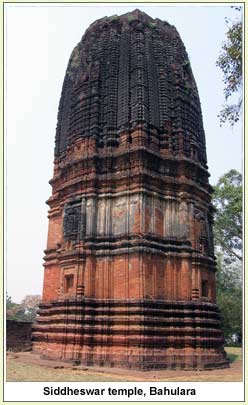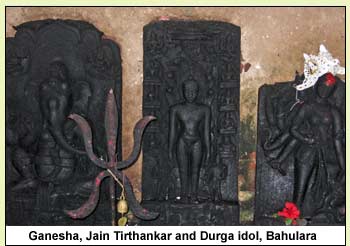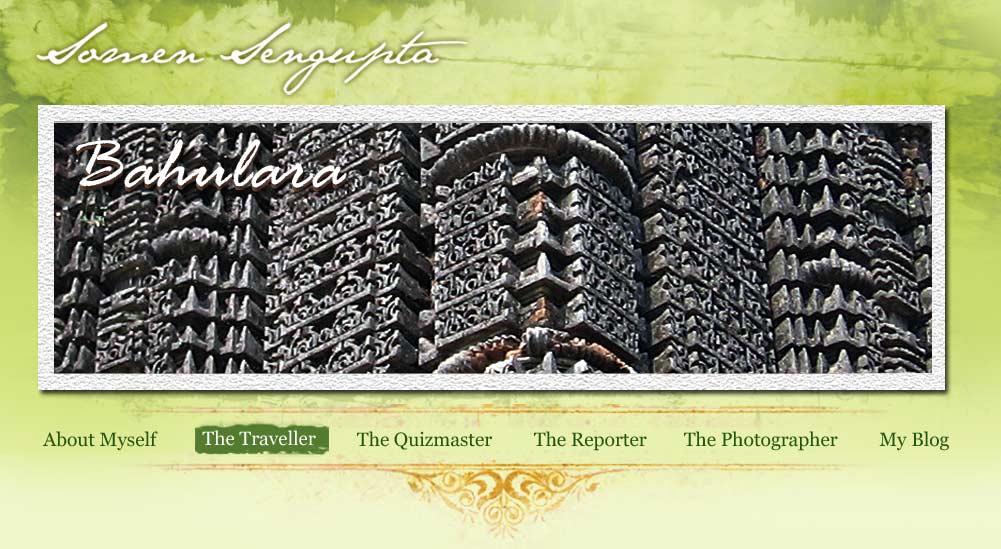|
Those who return from Bankura district after visiting only the terracotta temples of Bishnupur don’t know what they are missing. At the doorstep of the terracotta heartland, in the village of Bahulara, is one of the finest temples in Bengal, which is also perhaps the only surviving monument of the pre-Islamic era in the state. Sadly, tourists generally give the Siddheswar temple a miss and serious students of history and architecture are the only ones who drop by. 
The deul style of the temple is characteristic of the Orissa school of architecture, mostly seen in Bankura and Midnapore districts of Bengal. A portion of the structure has been destroyed but its attraction has not dimmed. Even in the late 19th century, scholars had described the red-and-black temple as “the best in the district” and if not the largest, the “finest” brick temple. However, it languished without care till as late as 1972, when the Archaeological Survey of India took the responsibility of preserving this peerless work of art. Now, the temple is a must-visit spot on architectural study tours and frequently on the itinerary of tourists from abroad.
The year the temple was built and the name of its founder cannot be ascertained. The structure and design does not betray any Islamic influence.According to historians, the temple came up between the 8th and 11th centuries. Professor K.N. Jha felt it is an 8th century temple, while S.K. Saraswati has described it as an 11th century construction. The tower and the lack of front extension are typical of the style followed during the Pala and Sena periods.

The temple, on the western bank of the river Darakeshwar, is called the Behula temple by the residents of the area. The structure is 30 ft long and 64 ft high. There’s no way to find out how tall the temple was originally. It faces the west and many believe it was originally a Jain place of worship. In the sanctum sanctorum, three images can be seen on stone. One is of Ganesha while other the two are of Durga and Jain Tirthankar. There is also the shivling that has given the temple its name. Enormous metal bells hang from the roof. The remains of Jain stupas have been excavated outside the temple. There are ornamental flora and many dancing figures on the walls of the structure, apart from male and female sculptures on the upper portions. Terracotta has been used only in places and most of these parts have been defaced. A stone pillar in the compound also attracts visitors.
Shivaratri is followed by month-long festivities that draw huge crowds and culminate in gajan and the Bengali New Year.
Trip tips
Bahulara, in Onda block, is 25 km from Bishnupur town. Ondagram is the nearest railway station. The best train is Rupashi Bangla from Howrah. Buses are also available from Bishnupur to Onda. Take a cycle-rickshaw to visit the Bahulara temple. The trip will cost about Rs 60. Carry food and water from Bishnupur as there is no good eatery at Onda. There are restrictions on video photography.
.
|



